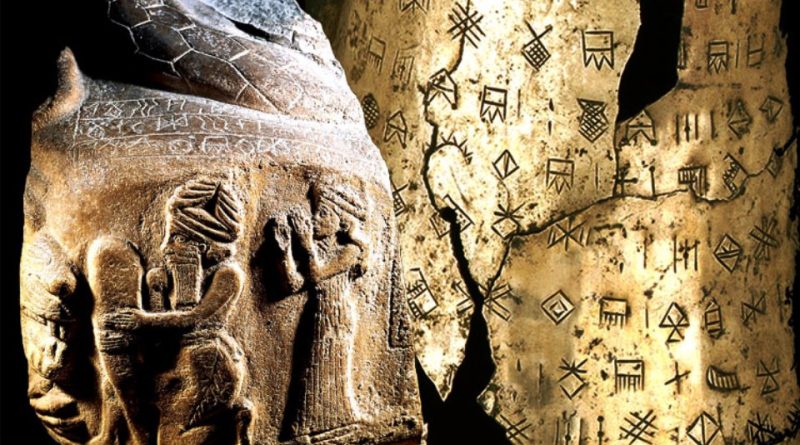The Elamites and agriculture
The Elamites and agriculture
The Elamites were an ancient people who lived in the area of today’s southwestern Iran, mainly in the historical region of Elam, located in present-day southwestern Iran. The history of the Elamites dates back over 5,000 years, and their civilization reached its peak during the second millennium BC.
This civilization flourished mainly between 2700 BC. and 539 BC.
Elam was geographically located between Mesopotamia to the west and the ancient Persian civilization to the east. The Elamites played a significant role in the political and cultural dynamics of that region for many centuries. The first evidence of the existence of the Elamites dates back to Sumerian and Akkadian texts dated around the 24th century BC. In these documents, the Elamites are often mentioned as neighbors and sometimes rivals of the ancient Mesopotamian empires.
The Elamite civilization developed into an independent kingdom in the 3rd millennium BC. and reached its maximum splendor in the 2nd millennium BC. under the Shutrukid dynasty, with their famous king Shutruk-Nahhunte. During his reign, the Elamites captured and sacked the city of Babylon in 1158 BC, carrying off numerous treasures and ending Babylonian rule for a short time.
However, the Elamites faced constant threats from surrounding empires, such as Assyria and ancient Persia. Over the course of the 1st millennium BC, the Elamites gradually lost their independence and were assimilated by the foreign empires that extended into the region. Ancient Elam disappeared as an autonomous political entity around the 6th century BC.
After the fall of the Elamite Empire, the region was contested by various imperial powers, such as the Achaemenids, Parthians and Sasanians. During the time of the Achaemenid Empire, Elam was included in the vast Persian Empire and became one of its provinces.
Despite the disappearance of the ancient Elamite kingdom, the culture and identity of the Elamites influenced the subsequent civilizations of Iran. Elements of Elamite art, architecture and traditions survived into the following centuries and also influenced Persian art and even Islamic art.
The history of the Elamites has been reconstructed mainly through the analysis of cuneiform texts and archaeological finds found in the region of Elam and in the surrounding areas. However, there are still many unanswered questions and many aspects of their civilization remain a mystery.
Agriculture –
Agriculture played a role of fundamental importance for their economy and supported the growth and development of the Elamite civilization.
The fertile soils and favorable climatic conditions of Elam provided a suitable environment for agriculture. The Elamites grew a variety of crops, including grains, such as barley and wheat, legumes, such as lentils and peas, and fruits, such as grapes, figs, and pomegranates. These crops formed a significant part of their staple diet.
The Elamites developed sophisticated irrigation systems to optimize the use of the water resources available in the region. Canals and gutters were built to direct water to the fields, allowing for higher agricultural productivity.
Cattle raising was also an important component of Elamite agriculture. The Elamites kept sheep, goats and cattle for the production of milk, meat and skins. Horse breeding had a particular role in Elam, as horses were used for both agricultural and military purposes.
The practice of intensive cultivation was widespread in Elamite society. The land was worked with agricultural implements such as plows pulled by draft animals. The Elamites also used the crop rotation system to preserve soil fertility.
Elamite agriculture was organized on a community basis. Lands were divided among households and agricultural produce was traded and distributed through local market systems. There was a primitive form of central government that could intervene to ensure the equitable distribution of resources and the management of agricultural problems.
The agriculture of the ancient Elamites provided the economic basis for their social, political and cultural development. The availability of surplus food allowed for the specialization of professions, the accumulation of wealth and the growth of cities. Elam became a major player in regional trade, facilitated by its agricultural resources.
However, it is important to note that ancient Elamites’ information on agriculture is limited and based mainly on archaeological finds and texts written in cuneiform. Ongoing studies and new discoveries could bring further insight into the agricultural practice of the ancient Elamites.
Agricultural implements –
The economy of the Elamites was mainly based on agriculture and the use of agricultural tools was essential for their survival and development. Unfortunately, due to the paucity of surviving Elamite written sources, detailed information on the specific agricultural implements used by the Elamites is limited. However, we can make some assumptions based on archaeological finds and references from other contemporary civilizations.
Among the agricultural tools generally used by the ancient Mesopotamian peoples, which may be similar to those used by the Elamites, were:
– Ploughs: Plows were fundamental tools for agriculture. It is assumed that the Elamites had animal-drawn ploughs, which were pulled by oxen or donkeys to loosen the soil.
– Hoes: The hoes were used to loosen the soil, break the tufts of grass and prepare the soil for sowing.
– Falcons: Falcons were used for sowing seeds. These were V-shaped tools used to open the ground, plant the seeds and cover them with earth.
– Spades: Spades were tools similar to hoes but with a wider and flatter blade. They were used to till and dig the ground.
– Rakes: Rakes were used to collect and level the ground.
– Scythes: Scythes were tools used to cut grain or tall grass.
– Millstones: Millstones were tools used to grind cereals to obtain flour.
These are just a few examples of agricultural implements that may have been used by the Elamites. However, it is important to note that specific information on Elamites’ agricultural implements is limited and some hypotheses are based on general knowledge of the agriculture of the time and surrounding civilizations.
Guido Bissanti

